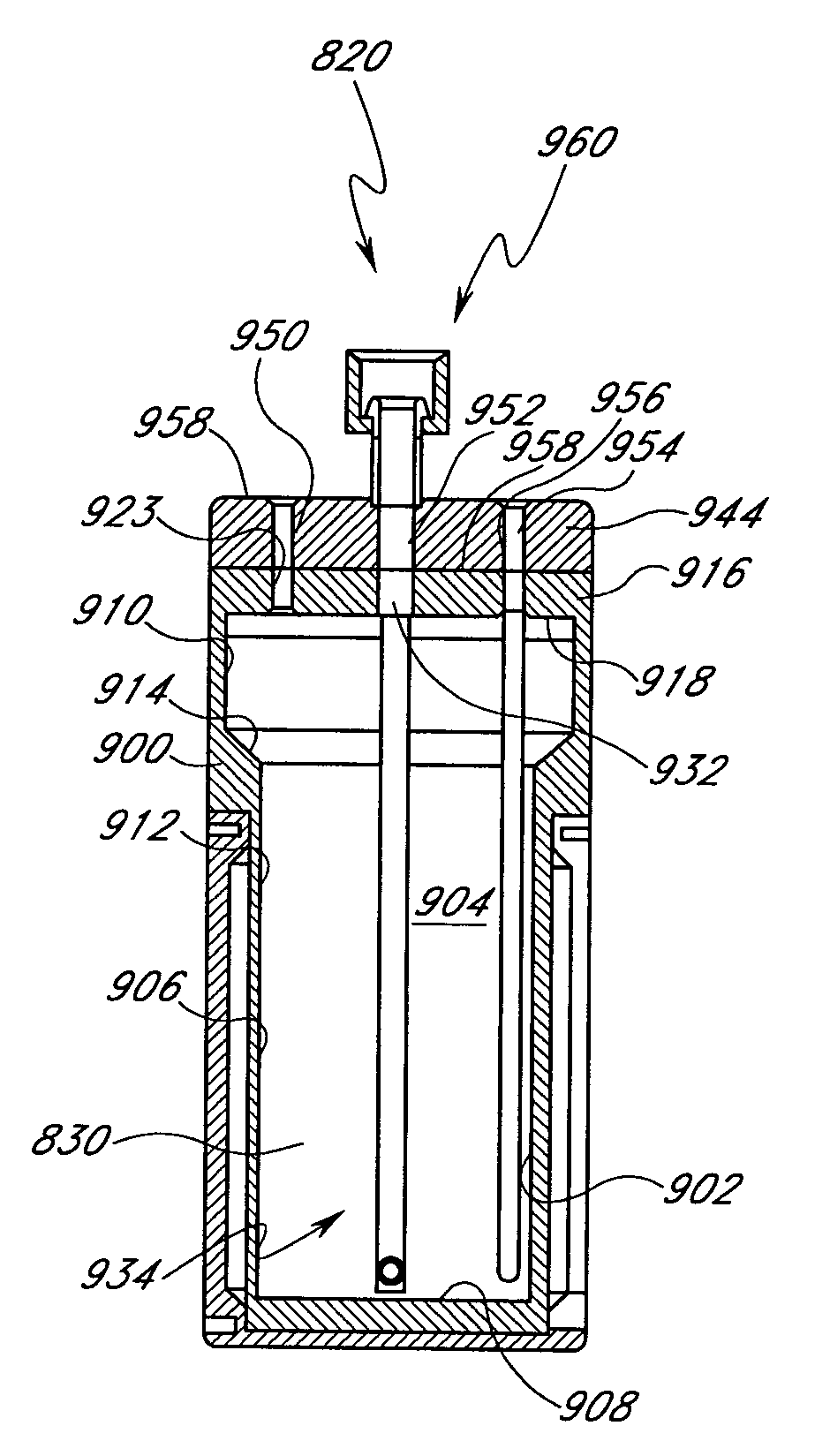Bubbler for substrate processing
a substrate and bubbler technology, applied in the field of trisilane and si3h8, to achieve the effect of improving the deposition process and high quality
- Summary
- Abstract
- Description
- Claims
- Application Information
AI Technical Summary
Benefits of technology
Problems solved by technology
Method used
Image
Examples
example 1
[0094]An eight-inch diameter (200 mm) silicon wafer substrate having a 1,000 Å SiO2 layer was placed into the reactor chamber and allowed to reach thermal equilibrium at 450° C. at 40 Torr pressure under a flow of 20 standard liters per minute (slm) of high purity hydrogen gas. Trisilane was introduced to the chamber by passing high purity hydrogen gas through liquid trisilane using a bubbler (maintained at room temperature using a water bath around the vessel containing the trisilane) connected by a feed line to the chamber. A flow rate of 180 standard cubic centimeters per minute (sccm) of the hydrogen / trisilane mixture, along with a flow of 90 sccm (inject) of diborane (100 ppm, 90 sccm mixed with 2 slm high purity hydrogen), was then passed into the reactor for four minutes. A continuous, boron-doped, amorphous silicon film having a total thickness of 56 Å and a surface roughness of about 2 Å rms (comparable to the underlying silicon dioxide) was deposited on the silicon dioxide...
example 3
[0096]The process of Example 1 was repeated, except that the flow rate was 228 sccm, diborane was not used, and the deposition time was two minutes. A continuous amorphous silicon film having a total thickness of 28 Å and a surface roughness of about 2 Å rms (comparable to the underlying silicon dioxide) was deposited on the silicon dioxide layer at a deposition rate of 14 Å per minute. A layer of epoxy was then applied to facilitate cross-sectional sample preparation. FIG. 10 is reproduction of an electron micrograph showing a cross section of the resulting substrate showing the underlying SiO2 layer (“oxide”), the deposited amorphous silicon film (“a-Si”), and the overlying epoxy layer (“epoxy”).
example 4
[0097]An eight-inch diameter (200 mm) silicon wafer substrate having a 1,000 Å SiO2 layer was placed into the reactor chamber and allowed to reach thermal equilibrium at 600° C. at 40 Torr pressure under a flow of 20 standard liters per minute (slm) of high purity hydrogen gas. Trisilane was introduced to the chamber by passing high purity hydrogen gas through liquid trisilane using a bubbler (maintained at room temperature using a water bath around the vessel containing the trisilane) connected by a feed line to the chamber. A flow rate of 180 standard cubic centimeters per minute (sccm) of the hydrogen / trisilane mixture, along with a flow of 90 sccm (inject) of diborane (100 ppm, 90 sccm mixed with 2 slm high purity hydrogen), was then passed into the reactor for 15 seconds to deposit an amorphous boron-doped silicon film having a thickness of 100 Å. Under these conditions, the delivery rate of trisilane to the substrate was about 0.1 gram per minute. The deposition rate was 400 ...
PUM
 Login to View More
Login to View More Abstract
Description
Claims
Application Information
 Login to View More
Login to View More - R&D
- Intellectual Property
- Life Sciences
- Materials
- Tech Scout
- Unparalleled Data Quality
- Higher Quality Content
- 60% Fewer Hallucinations
Browse by: Latest US Patents, China's latest patents, Technical Efficacy Thesaurus, Application Domain, Technology Topic, Popular Technical Reports.
© 2025 PatSnap. All rights reserved.Legal|Privacy policy|Modern Slavery Act Transparency Statement|Sitemap|About US| Contact US: help@patsnap.com



